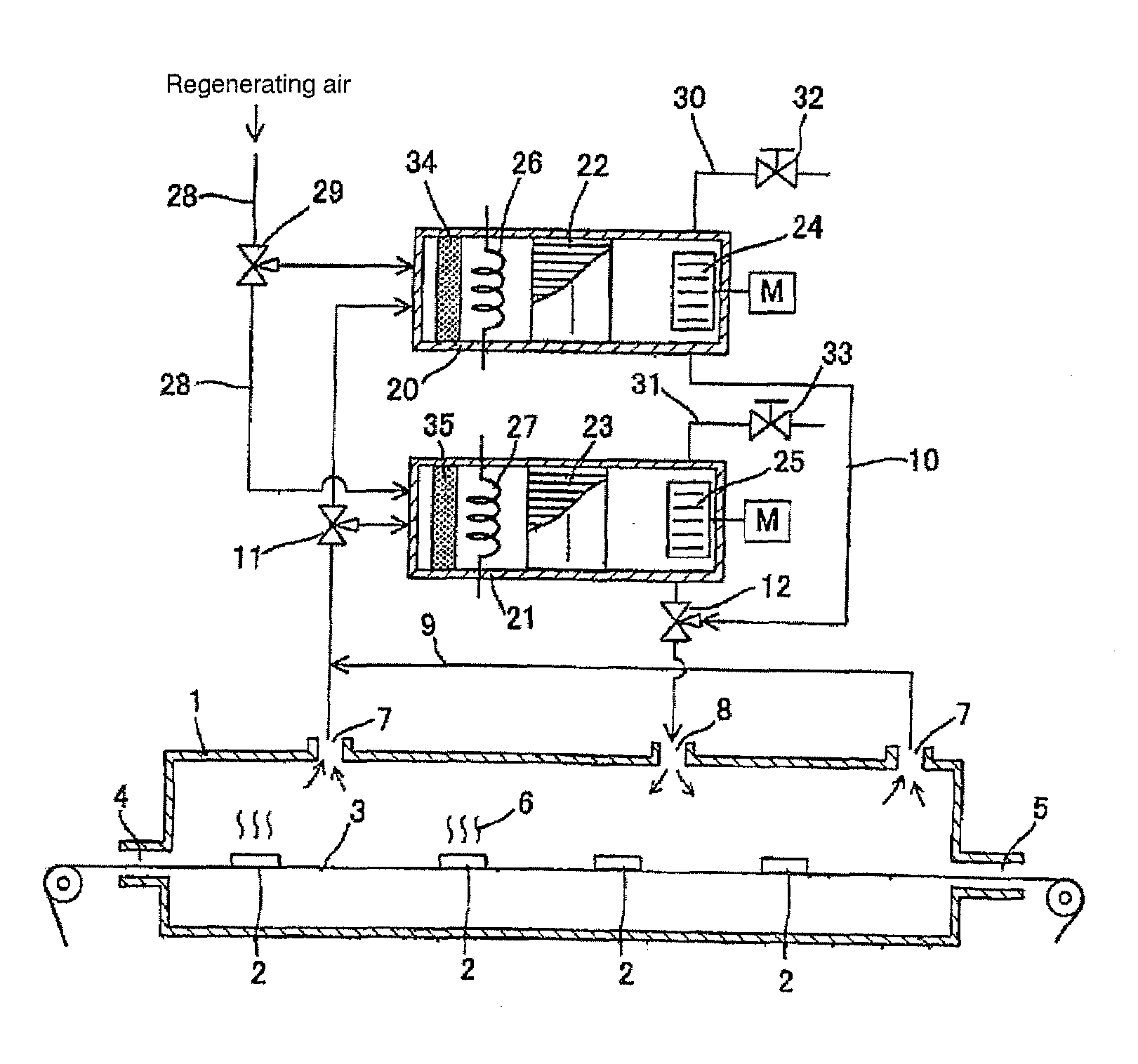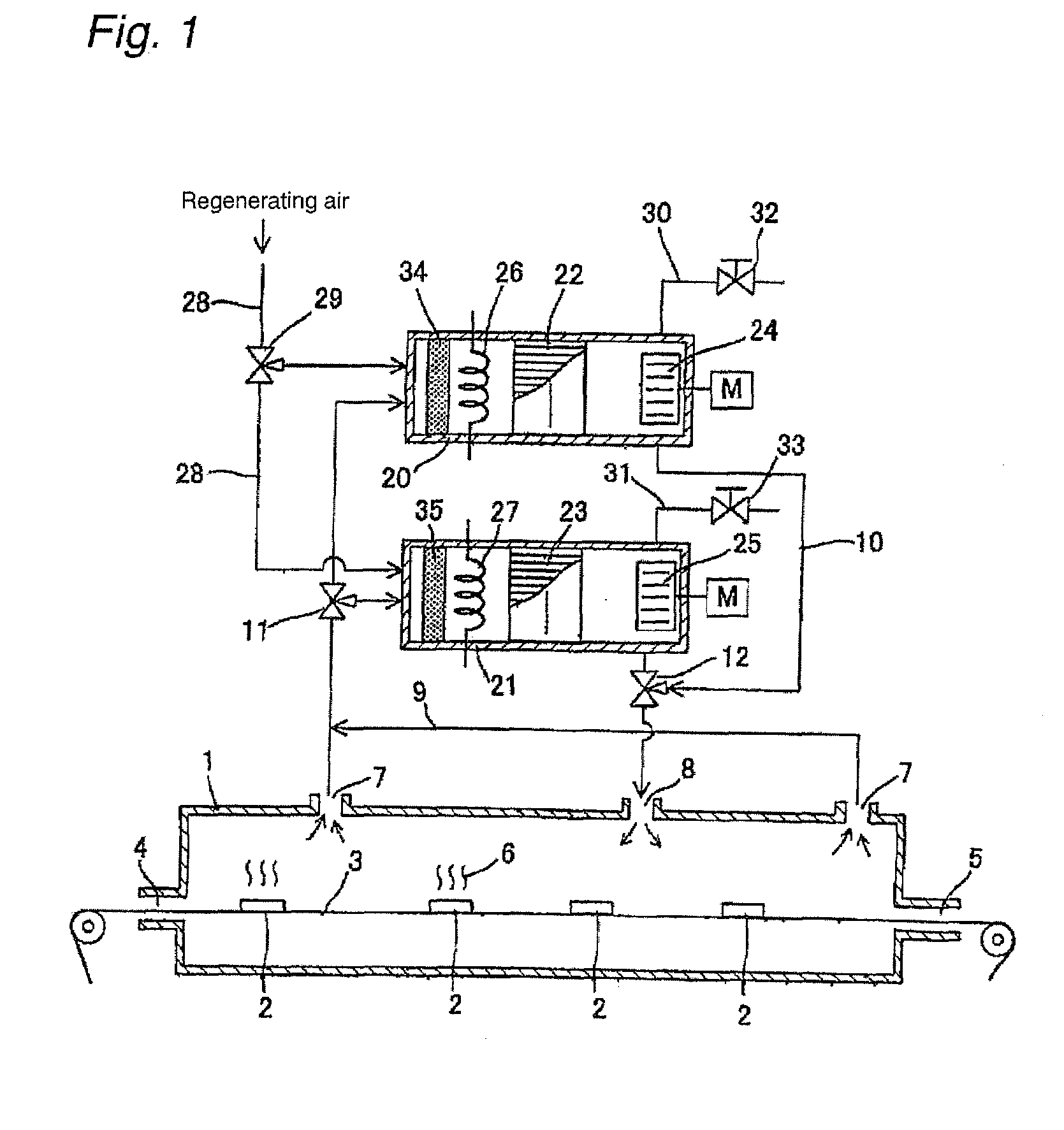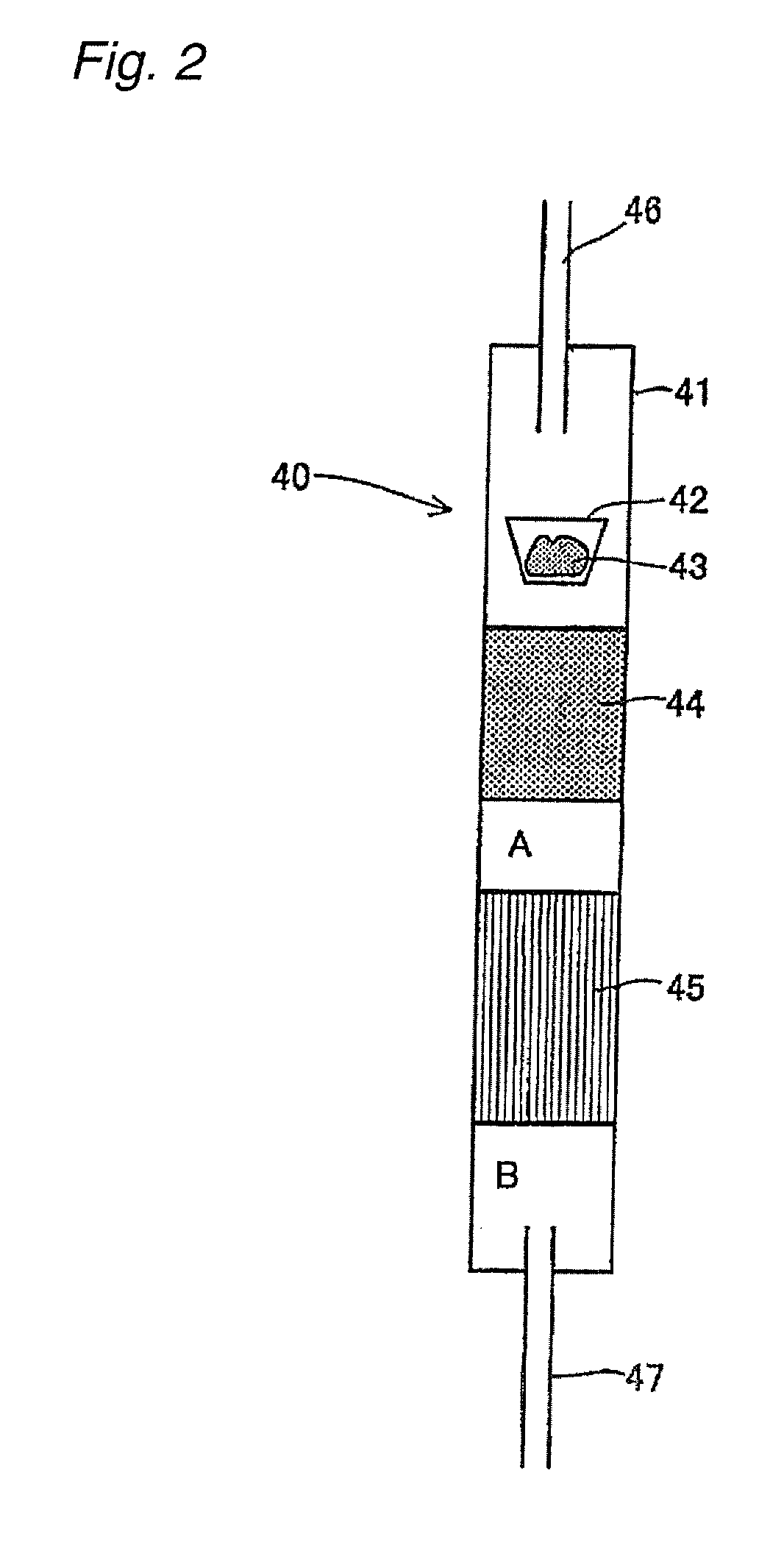Purification catalyst for reflow furnace gas, method for preventing contamination of reflow furnace, and reflow furnace
- Summary
- Abstract
- Description
- Claims
- Application Information
AI Technical Summary
Benefits of technology
Problems solved by technology
Method used
Image
Examples
example 2
[0099]A method which comprises carrying a catalyst layer containing the component A or both of the component A and the component B, as well as a precious metal, on a substrate, then impregnating the catalyst layer with an aqueous solution of potassium nitrate, and firing the impregnated catalyst layer at 400 to 550° C.
[0100]Additionally, the catalyst of the present invention does not exclude containing a binder component to be described later and other components, as long as they do not inhibit a catalytic function.
[0101](Actions of Catalyst)
[0102]The purification catalyst of the present invention has an action based on a hitherto unknown technical idea, i.e., the work of performing a catalytic cracking reaction at a soldering temperature of 220 300° C. even under atmospheric conditions within a reflow furnace, namely, in a low oxygen concentration state, for example, in a nitrogen atmosphere, thereby converting the flux components into light hydrocarbons.
[0103](Method for Preparing...
example 1
[0169]The fact of catalytic cracking was confirmed in the following manner:
Comparative Example
No Catalyst
[0170]In the apparatus 40 of FIG. 2, a honeycomb carrier formed of cordierite (having no catalytic component carried thereon) was mounted at the position of the catalyst 44, and a flux sample was charged into the container 42. In this state, a catalytic cracking reaction was performed under the aforementioned conditions. A gas chromatographic analysis chart of a hydrocarbon composition in the cracked gas B is shown in FIG. 3A.
[0171]As shown in FIG. 3A, several tiny peaks were observed, and the total content corresponding to them (calculated as methane CH4) was 1.0 ppm. CO (carbon monoxide) in the cracked gas was in an amount of its detection limit or less (5 ppm or less).
examples 2 to 8
[0178]Flux Cracking Rate and Amounts of CO, Etc.:
[0179]The apparatus of FIG. 2 was charged with each of the catalysts, and the catalytic cracking reaction of the flux components was repeatedly performed through 10 cycles under the aforementioned conditions. After each cycle, the composition of the cracked gas B (CO, CO2 and THC) and the carbon content in the catching filter were measured. The THC (total hydrocarbons) means the whole of light hydrocarbons in the cracked gas B that were detected under the aforementioned gas chromatography conditions.
[0180]The flux cracking rate was determined by Equation 1 indicated below. As clear from Equation 1, the catalyst having a high flux cracking rate involves a smaller C content of the uncracked flux. This means that contamination in the actual reflow furnace is prevented.
Flux cracking rate (wt. %)=(1−(C content of uncracked flux) / (total C content of cracked gas)}×100 [Equation 1]
[0181]In this equation, the term “C content of uncracked flu...
PUM
| Property | Measurement | Unit |
|---|---|---|
| Percent by mass | aaaaa | aaaaa |
| Percent by mass | aaaaa | aaaaa |
| Percent by mass | aaaaa | aaaaa |
Abstract
Description
Claims
Application Information
 Login to View More
Login to View More - R&D
- Intellectual Property
- Life Sciences
- Materials
- Tech Scout
- Unparalleled Data Quality
- Higher Quality Content
- 60% Fewer Hallucinations
Browse by: Latest US Patents, China's latest patents, Technical Efficacy Thesaurus, Application Domain, Technology Topic, Popular Technical Reports.
© 2025 PatSnap. All rights reserved.Legal|Privacy policy|Modern Slavery Act Transparency Statement|Sitemap|About US| Contact US: help@patsnap.com



